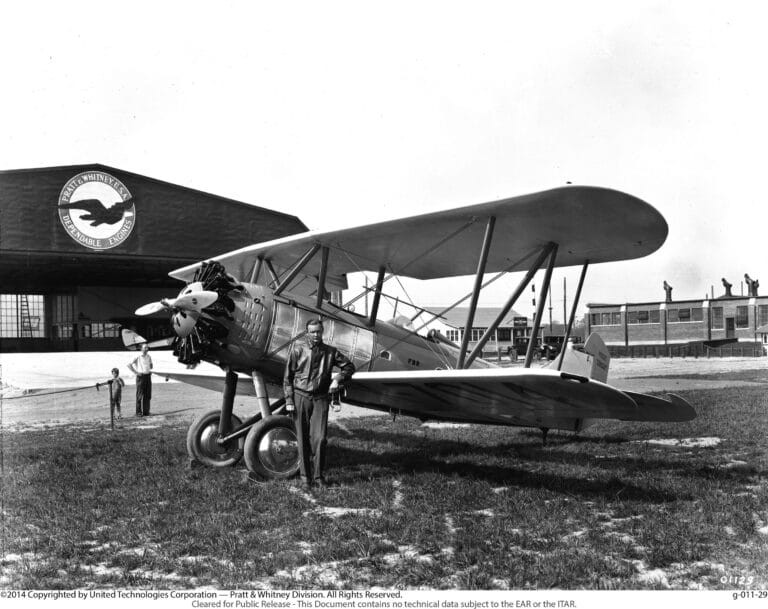As global aviation grapples with rising trade demands, ESG imperatives, and technological disruption, one of its longest-serving engine makers—Pratt & Whitney, a division of RTX—marks a milestone. On 22 July 2025, the Connecticut-based propulsion firm celebrated its centenary. Behind the ceremonial accolades, however, lies a deeper narrative of innovation that continues to inform the structure, sustainability, and scalability of the global air cargo sector.
From its early adoption of radial engines to its current focus on geared turbofan (GTF) and next-generation hybrid propulsion systems, Pratt & Whitney’s 100-year journey offers critical insights for policymakers, cargo integrators, and regulators navigating the future of air transport infrastructure and regulation.
A Propulsion Legacy Rooted in Logistics Evolution
Founded in 1925 by engineer Frederick B. Rentschler, Pratt & Whitney built its name on the success of the R-1340 Wasp, a 425-horsepower air-cooled radial engine that revolutionised military and commercial aviation. By 1926, the U.S. Navy had placed a 200-unit order, effectively launching the company into a trajectory that would later define Allied air power in World War II. In total, more than 363,000 engines were produced during the war—a testament to its industrial might.
While its early achievements are well-documented in aviation history, less discussed is the pivotal role these engines played in scaling global logistics capabilities, particularly during wartime supply efforts. In many ways, these were the earliest blueprints of today’s air cargo infrastructure.
Air Cargo Relevance: From Jet Age to Just-in-Time Trade
With the advent of the jet age, Pratt & Whitney demonstrated adaptability, shifting from radial to twin-spool gas turbines with the J57 engine, used on the Boeing B-52 and later commercial aircraft like the 707 and DC-8. These platforms laid the groundwork for the intercontinental cargo routes we take for granted today.
Of particular significance to the cargo sector is the JT9D, which powered the original Boeing 747—the aircraft that redefined long-haul freight. Introduced in 1969, the 747’s freighter versions have carried a substantial share of global goods, and the JT9D’s performance was critical to its commercial and operational success.
As air cargo networks increasingly expand into short- and medium-haul operations, particularly across emerging regional routes, narrow-body aircraft have assumed a more prominent role in freight strategies. Engines such as the V2500 have been central to enabling the efficient operation of these aircraft, particularly in bellyhold configurations used by passenger and integrator networks. This has allowed carriers to enhance the speed and frequency of shipments for time-sensitive commodities, including pharmaceuticals, perishables, and e-commerce fulfilment.
According to IATA, narrow-body freighter conversions have been growing at 6.2% CAGR since 2020, a trend underpinned by demand for faster, decentralised cargo networks—making fuel efficiency and engine reliability more critical than ever.
India’s Strategic Importance in the Pratt & Whitney Ecosystem
India has emerged as both a manufacturing base and an end-market for Pratt & Whitney, particularly within defence and civil logistics. Legacy engines powered India’s earliest jetliners, while today’s C-17 Globemaster III and C-295 transport platforms—vital to the Indian Air Force’s cargo fleet—continue to use the company’s propulsion systems.
“Our India story is an integral part of Pratt & Whitney’s 100-year legacy,” said Ashish Saraf, Vice President & Country Head, India. “With our increased footprint across engineering, digital and supply chain, I am confident that India will also play a defining role in shaping the future of Pratt & Whitney and RTX.”
India’s cargo market has been expanding at a compound annual growth rate (CAGR) of 9.6% between 2019 and 2024, according to the Ministry of Civil Aviation. Bengaluru, Hyderabad, and Delhi are emerging as export-consolidation hubs, particularly for pharmaceuticals, semiconductors, and precision manufacturing. These developments align well with Pratt & Whitney’s strategy to support regional MRO ecosystems and bolster skill development through centres like its Customer Training Centre in Hyderabad, where the firm’s global centenary exhibit is currently on display.
Technological Alignment with Policy and Trade Objectives
The centenary comes at a time when aviation policy is increasingly linked to strategic trade, digitalisation, and climate regulation. With RTX reporting $80 billion in revenues in 2024, its influence spans not just commercial airliners but defence, civil aviation, and integrated logistics systems.
The F135 engine, which powers the F-35 Lightning II, is emblematic of how engine technology intersects with NATO strategic capabilities, while the GTF Advantage and F135 Core Upgrade programmes integrate digital twin technologies and predictive maintenance, aiding compliance with asset monitoring frameworks under the EU Green Deal and SAF mandates.
For air cargo professionals, this convergence of compliance, efficiency, and ESG performance marks a new operational paradigm—where propulsion choices must deliver not just thrust, but traceability.
Propelling the Next Century of Air Trade
As Pratt & Whitney looks ahead to its next century, it faces a fundamentally different aviation landscape—one shaped by climate targets, digital twins, and geopolitical flux. Yet the company’s value proposition—safe, dependable, efficient engines—remains constant.
For air cargo operators and policymakers alike, the centenary offers more than historical reflection. It presents a case study in how legacy aerospace firms can adapt to future-ready freight paradigms—combining deep engineering capacity with regulatory responsiveness and market foresight.
As global air freight moves deeper into a climate-accountable, data-integrated era, engines will remain the lifeblood of the sector—not merely as mechanical units, but as strategic enablers of global trade.





